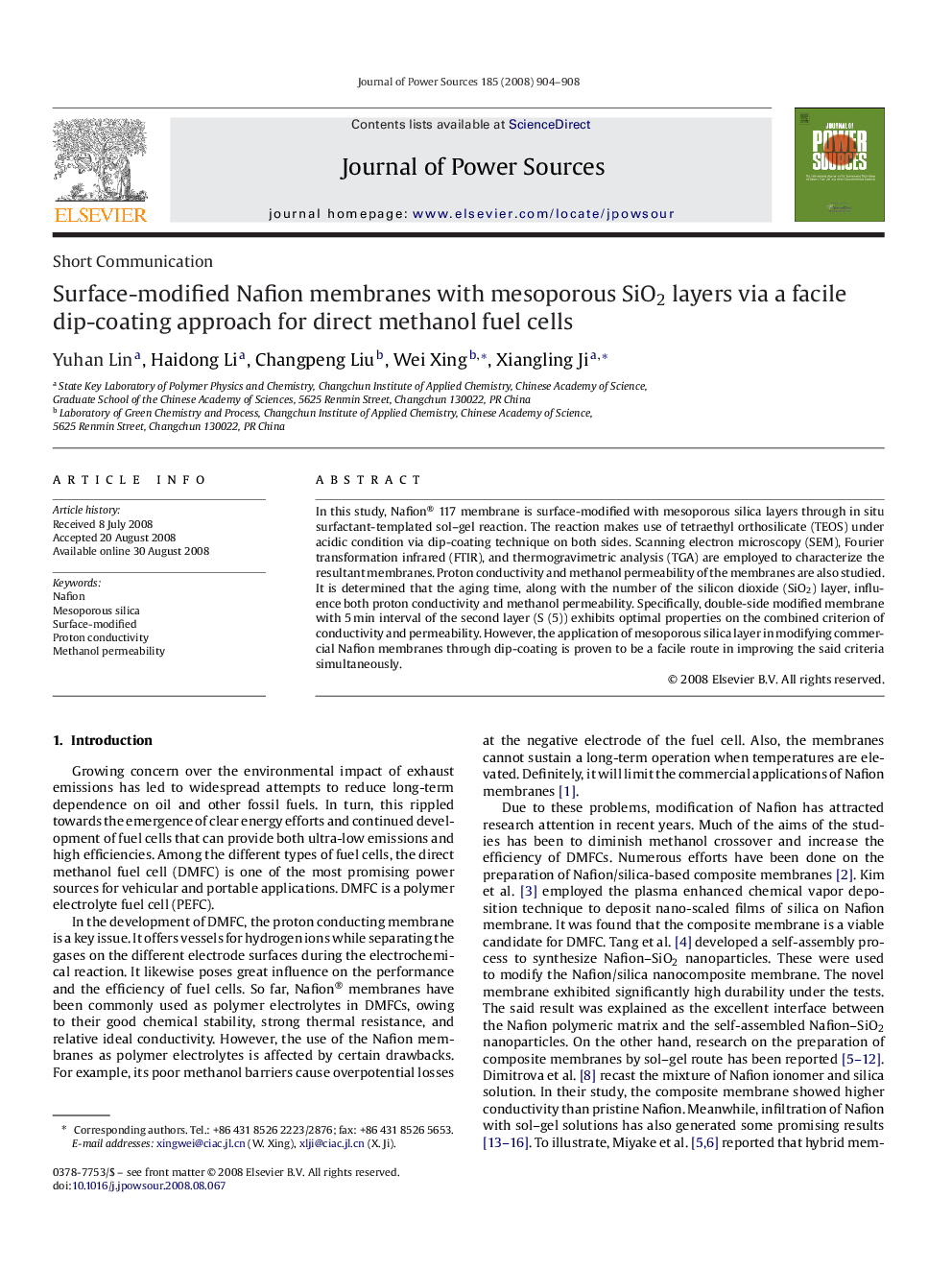| Article ID | Journal | Published Year | Pages | File Type |
|---|---|---|---|---|
| 1290201 | Journal of Power Sources | 2008 | 5 Pages |
In this study, Nafion® 117 membrane is surface-modified with mesoporous silica layers through in situ surfactant-templated sol–gel reaction. The reaction makes use of tetraethyl orthosilicate (TEOS) under acidic condition via dip-coating technique on both sides. Scanning electron microscopy (SEM), Fourier transformation infrared (FTIR), and thermogravimetric analysis (TGA) are employed to characterize the resultant membranes. Proton conductivity and methanol permeability of the membranes are also studied. It is determined that the aging time, along with the number of the silicon dioxide (SiO2) layer, influence both proton conductivity and methanol permeability. Specifically, double-side modified membrane with 5 min interval of the second layer (S (5)) exhibits optimal properties on the combined criterion of conductivity and permeability. However, the application of mesoporous silica layer in modifying commercial Nafion membranes through dip-coating is proven to be a facile route in improving the said criteria simultaneously.
